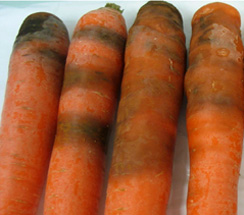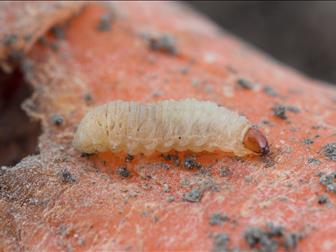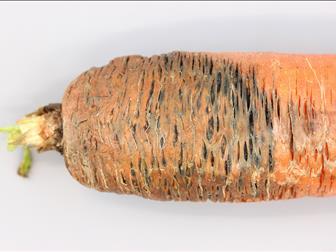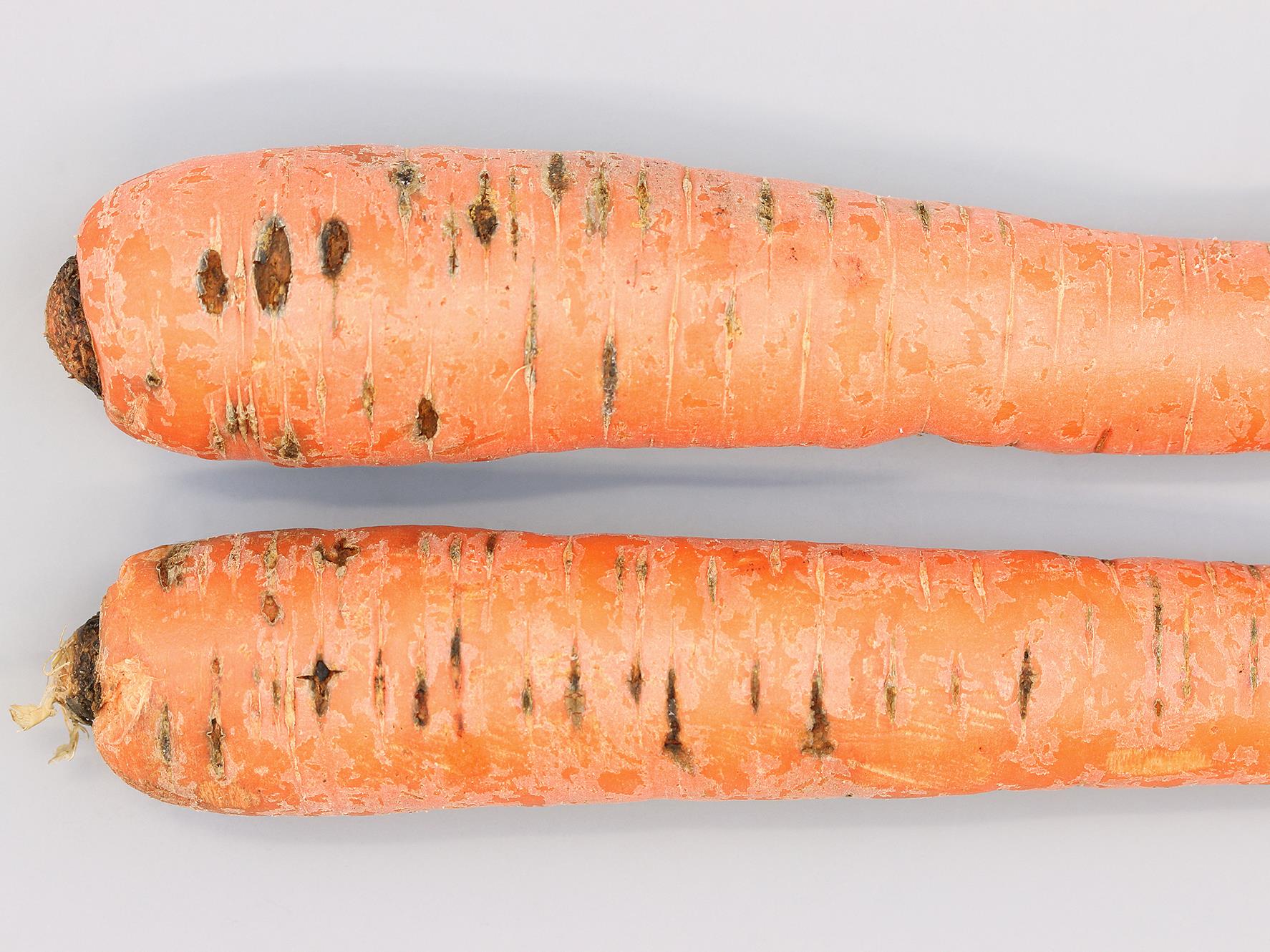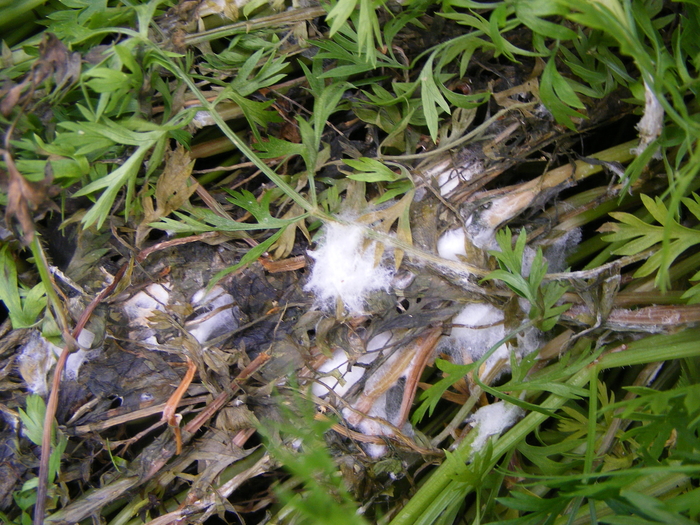
Zanahoria
How to recognize and combat carrot pox
Carrot Pox, Leaf Spot
Fungus
Type:
Risk to the plant:
HIGH
Cercospora Carotae
Pathogen:
Cercosporosis
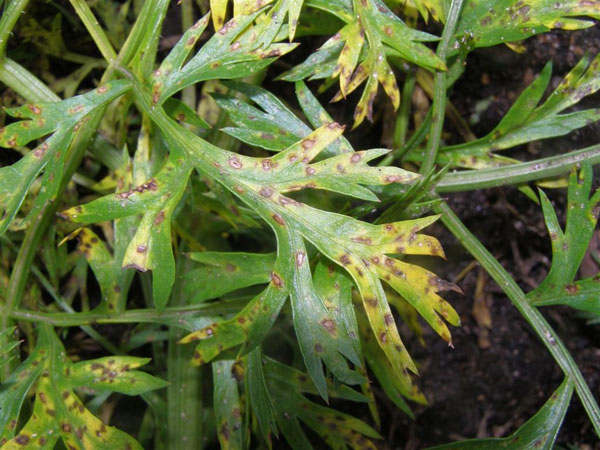
WHO CAUSES IT?
Cercospora carotae is a phytopathogenic fungus responsible for carrot pox and leaf spot. This pathogen produces conidia that are dispersed through air and water, especially during high humidity conditions. Conidia germinate on the surface of the leaves and penetrate plant tissues through stomata or wounds. Once inside the plant, the fungus develops mycelium that spreads between the cells, feeding on the plant's nutrients and causing the death of infected cells. Cercospora carotae can survive on infected plant remains and in soil for long periods. Spores can be carried by wind, irrigation water, and contaminated growing tools. Initial infection usually occurs in older leaves and progresses to younger ones. Spores are produced in abundance on foliar lesions, facilitating continued spread of the fungus during the growing season.
SYMPTOMS
Carrot pox and leaf spot caused by Cercospora carotae primarily affect carrot foliage, compromising photosynthesis and overall plant health. Severe infections can result in a significant reduction in crop yield and quality.
- Small, brown to black Taches on the leaves.
- Lesions surrounded by a yellowish halo.
- Taches with light centers and dark edges.
- Drying and premature leaf fall.
- Reduction of plant vigor.
- Lower size and quality of the roots.
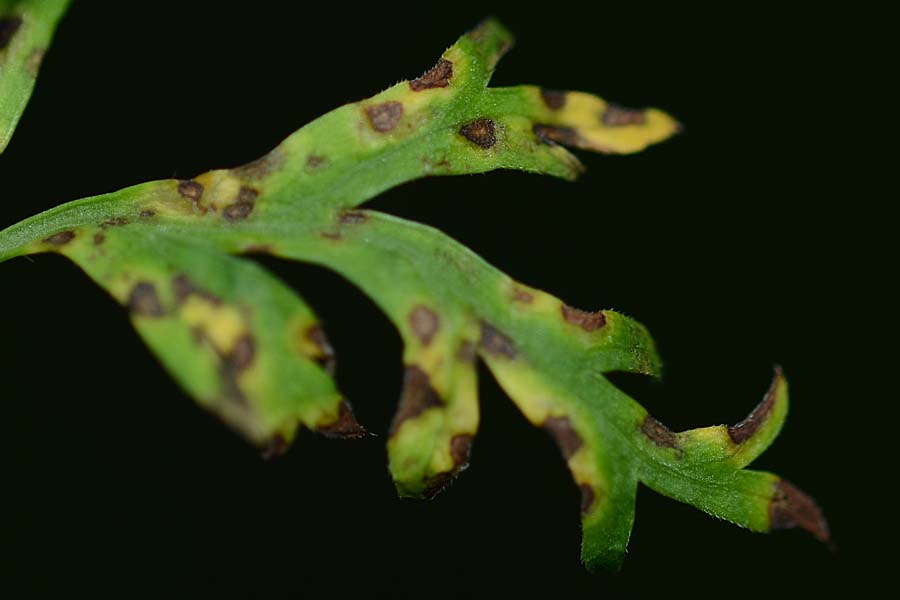
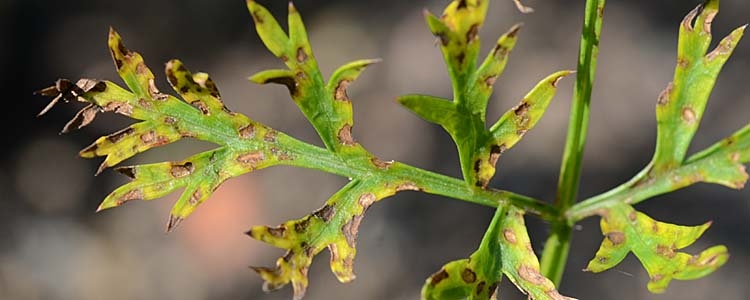
DEVELOPMENT CONDITIONS
Temperature:
20°C - 30°C
Humidity:
85% - 100%
HOW IS IT SPREAD?
Air, Irrigation water, Contaminated tools, Infected plant remains, Infected seeds
HOW TO ELIMINATE IT?
Home treatments
There are no home treatments
Natural allies
There are no natural allies
Chemical treatments
There are no treatments for this disease. Treatments are directed at the insect vectors that transmit it. See insect treatments.
RECOMMENDED PRODUCTS TO ELIMINATE THE PEST
Sponsored link
Sponsored link
Sponsored link
Sponsored link
Sponsored link
Sponsored link
Effective against all types of fungi
PLANTAS REPELENTES
-
RECOMMENDATIONS
- Avoid wetting the leaves when watering; water directly to the ground.
- Leave space between plants for air to circulate.
- Eliminate diseased leaves and do not leave them on the ground.
- Rotate crops and do not always plant in the same place.
- Use healthy and good quality seeds.
- Apply horsetail infusion or a solution of baking soda and neutral soap.
- If there are already many symptoms, you can use a natural or chemical fungicide, but always follow the instructions on the container.





















